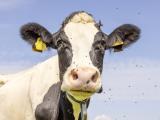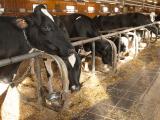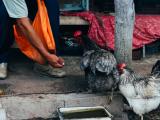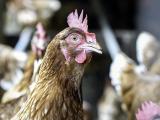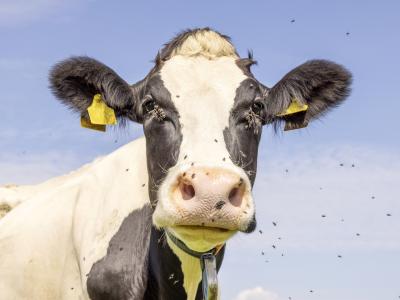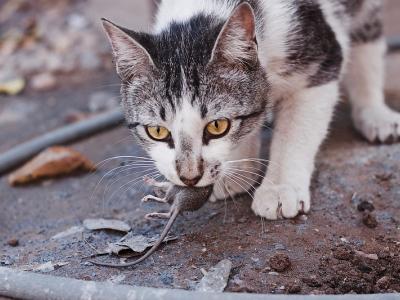Dec 30, 2005 (CIDRAP News) – Last month, officials in Italy and Canada aroused concern by announcing they had found an H5N1 influenza virus in wild birds. Neither country had previously been troubled by any reports of the virulent H5N1 virus that has been plaguing poultry and occasionally sickening and killing humans in Asia.
But in both cases, health officials said the virus was not dangerous and was unrelated to the H5N1 virus in Asia.
This suggested an obvious question: If a virus has the same name as the one in Asia, why isn't it just as dangerous?
The answer has to do with the rather outdated conventions for naming influenza viruses, according to David Halvorson, a veterinary pathologist and avian influenza expert at the University of Minnesota in St. Paul.
The "H" and "N" in the name of a flu virus stand for hemagglutinin and neuraminidase, two proteins on the surface of the virus that allow it to enter and exit host cells. Sixteen different hemagglutinins and nine different neuraminidases have been identified to date.
Hemagglutinin and neuraminidase were the first aspects of the flu virus to be identified, so the nomenclature was built around the two genes that code for them, Halvorson explained to CIDRAP News. The types are numbered according to when they were discovered; H1 was identified first.
However, a flu virus also has six other genes and corresponding proteins. Thus a name like "H5N1" is a very incomplete description of the virus.
"The H5N1 only describes two of the eight genes, so there are six other genes," Halvorson said. It's possible to have an H5N1 strain with six other genes from an avian flu virus, or an H5N1 with six other genes from a human-adapted or pig-adapted flu virus. "That's how far apart they can be."
For example, the other six genes in a given H5N1 virus could be identical to the other six genes in an H6N2 virus, he said.
In an analogy Halvorson uses with his students, he said that assuming that all H5N1 viruses are identical would be like assuming that all men wearing navy blazers and gray pants are the same in other ways.
"You can have the mafia wearing that outfit or you can have a college professor wearing that outfit—or a used car salesman," he said.
"We're stuck with something we have difficulty explaining because we don't really have good nomenclature," Halvorson summed up.
Mild viruses can turn nasty
Avian flu viruses of the H5 and H7 types can be either relatively harmless or highly lethal to poultry—low-pathogenic or highly pathogenic. (The conventional abbreviations are LPAI and HPAI, for low-pathogenic and highly pathogenic avian influenza.) In fact, all known HPAI strains are either H5 or H7 subtypes.
HPAI strains typically are detected as a result of poultry deaths, Halvorson said. The designation of high pathogenicity generally is based on what happens to healthy chickens when they're exposed to the virus. If the virus kills at least 6 out of 8 chickens in a challenge trial, it is deemed highly pathogenic.
Unfortunately, a low-pathogenic strain won't necessarily stay that way. It can evolve unpredictably into a highly pathogenic strain—a change that may take weeks, months, or even years.
What differentiates LP from HP strains at the molecular level, Halvorson explained, is the nature of the hemagglutinin cleavage site, where the hemagglutinin is split by an enzyme or some other factor, enabling the virus to enter a host cell.
In most human and poultry flu cases, the virus is cleaved by protease, an enzyme found in the respiratory tract, Halvorson said. But an HPAI virus doesn't need that protease assistance to split; "It gets cleaved almost by itself." Consequently such viruses can spread in many tissues, not just the respiratory tract.
Scientists now can identify HPAI viruses not only by how they affect chickens, but also by examining the amino acid sequences at the hemagglutinin cleavage site, according to Halvorson. (Most of the time, however, HPAI viruses are detected by their effects on poultry.)
Generally, HPAI viruses are defined by having four basic (as opposed to acidic) amino acids at the cleavage site, he said. However, in the last few years there were two cases in which an HPAI virus emerged without those four basic amino acids. Those viruses had an insert from another gene at the cleavage site that allowed it to split more easily. The outbreaks involved H7 strains in Chile in 2002 and in British Columbia in 2004.
Viral instability tough on poultry industry
Those outbreaks illustrated once again the highly unstable nature of flu viruses. Mutations occur constantly as the virus tries "to find the best fit for the species" it depends on, Halvorson said.
Flu viruses, including H5 and H7 varieties, circulate all the time in wild waterfowl, usually without making them sick. "Occasionally there's going to be spillover into poultry someplace. Even though it may be low-path, it's cause for concern," he explained.
The US poultry industry is "99.99% free of influenza," but every year flu turns up in one or more flocks in one or several states, he added.
When the strain is a low-pathogenic H5 or H7, there's no way to predict if, or how soon, it might evolve into a highly pathogenic form. In the outbreaks in Chile and British Columbia, the transition took just a few weeks. But in Pennsylvania in 1983, it took 6 months. And a low-pathogenic H7N2 virus has persisted in live-bird markets in New York since 1994 without changing into the lethal form.
The World Organization for Animal Health (OIE) recently recommended that all low-pathogenic H5 and H7 avian flu outbreaks be reported to veterinary authorities, given the risk that they can turn virulent, Halvorson said. This has increased the level of awareness and concern about the viruses.
"So states like Minnesota, which never destroyed any poultry before, if we were to get an H5 or an H7 [that's low-pathogenic], we'd be under tremendous pressure to destroy the flock," he noted.
The heightened concern has economic consequences. Halvorson said there's no legal basis for banning poultry imports from an area where LPAI has been found, yet the US Department of Agriculture promptly (though temporarily) banned poultry from British Columbia recently when an LPAI strain turned up there.
H5N1 may lead to use of risky vaccines
As the virulent H5N1 virus continues to evolve and kill poultry in Eurasia, Halvorson predicted, scientists may turn toward a hitherto unthinkable option: a live influenza vaccine for poultry. Such vaccines use a live but weakened form of flu virus.
Such vaccines have long been considered too risky in poultry. "Because these viruses are so unstable, the concern was that they could recombine with some other virus that's there and make something worse," he said.
But with the H5N1 virus now present in 15 or more countries and endemic in several of them, using a live vaccine may be worth the risk, he said. "People are now saying we've got to attack this with everything at our disposal, and that'll have to include a live vaccine. The door is open now for a live H5 vaccine in birds."
Live vaccines offer important advantages, Halvorson explained. One is that they require less antigen (active ingredient) than killed vaccine. A live vaccine may contain too few copies of the weakened virus to trigger an immediate immune response, but once inside the host, the virus replicates to the point where the immune system detects and responds to it. A killed virus must be injected in larger doses, because it doesn't multiply inside the recipient.
A second advantage is that live viruses don't have to be injected into each bird individually; they can be put into drinking water or sprayed into the air in a chicken coop. That way, hundreds or thousands of birds can be immunized quickly. Killed viruses, by contrast, must be injected, because there's no other way to administer them that will bring them into contact with the immune system.
Earlier this week, not long after Halvorson predicted that live vaccines would be used against H5N1, Chinese veterinary officials announced they had developed a live-virus vaccine covering both H5N1 flu and another devastating poultry virus, Newcastle disease.
In a follow-up interview, Halvorson said it appeared that the Chinese vaccine involved a genetically engineered Newcastle disease virus, rather than a live influenza virus. "I believe they're talking about a recombinant Newcastle vaccine virus that will express a protein from an [H5N1] influenza virus, and the body would produce antibodies against that H5 virus," he said.
"A similar thing was done here [in the United States] a few years ago," but it didn't lead to a marketable vaccine, he said.
See also:
Nov 11 CIDRAP News story dealing with H5N1 virus in Italy
http://www.cidrap.umn.edu/cidrap/content/influenza/avianflu/news/nov1105avian.html
Nov 21 CIDRAP News story mentioning H5N1 virus found in Canada
http://www.cidrap.umn.edu/cidrap/content/influenza/avianflu/news/nov2105canada.html


